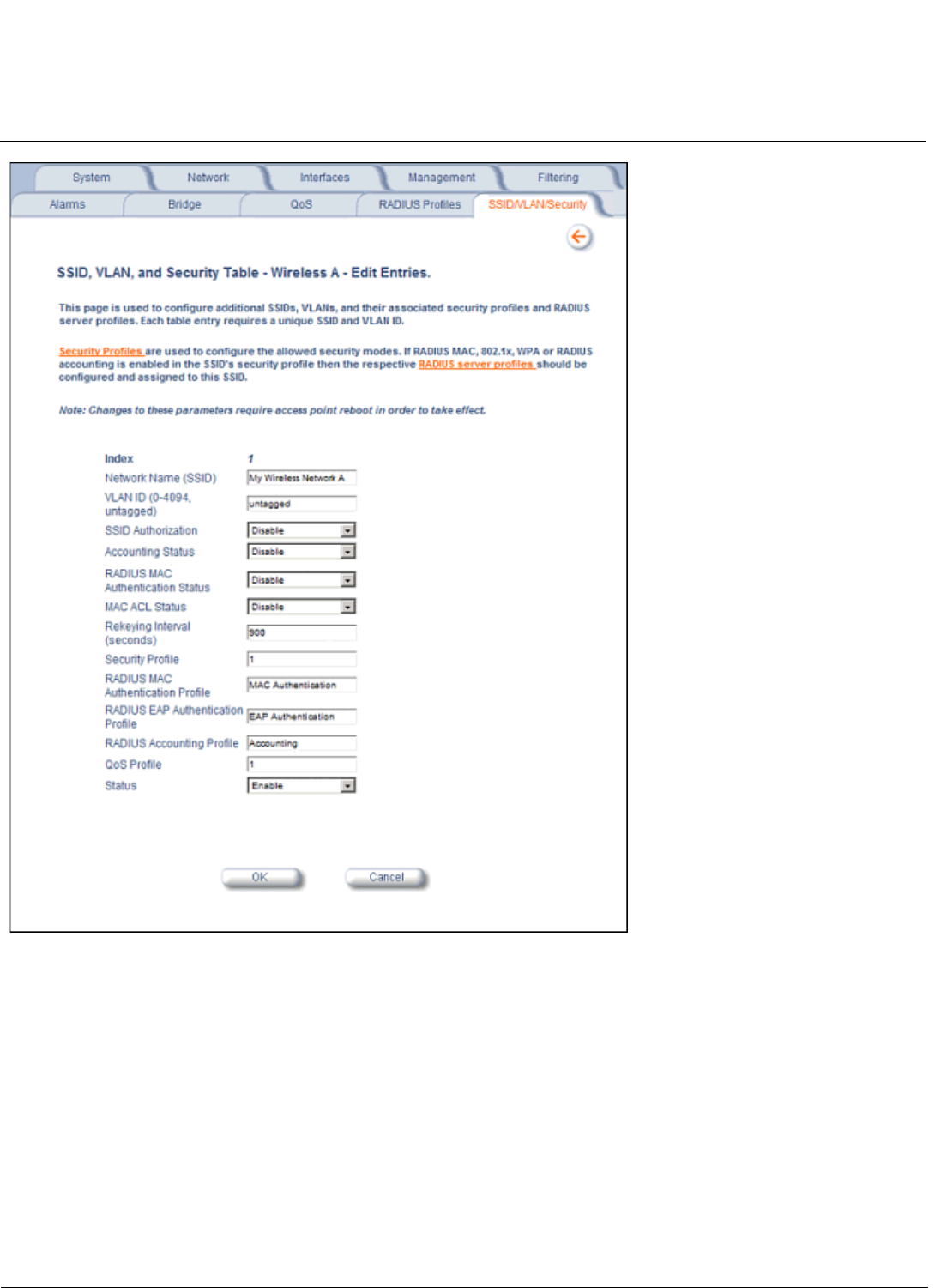Access Point User Guide
Table Of Contents
- Introduction
- Installation and Initialization
- System Status
- Advanced Configuration
- System
- Network
- Interfaces
- Management
- Filtering
- Alarms
- Bridge
- QoS
- Radius Profiles
- SSID/VLAN/Security
- Monitoring
- Commands
- Troubleshooting
- Command Line Interface (CLI)
- General Notes
- Command Line Interface (CLI) Variations
- CLI Command Types
- Using Tables and Strings
- Configuring the AP using CLI commands
- Set Basic Configuration Parameters using CLI Commands
- Set System Name, Location and Contact Information
- Set Static IP Address for the AP
- Change Passwords
- Set Network Names for the Wireless Interface
- Enable 802.11d Support and Set the Country Code
- Enable and Configure TX Power Control for the Wireless Interface(s)
- Configure SSIDs (Network Names), VLANs, and Profiles
- Download an AP Configuration File from your TFTP Server
- Backup your AP Configuration File
- Set up Auto Configuration
- Other Network Settings
- Configure the AP as a DHCP Server
- Configure the DNS Client
- Configure DHCP Relay
- Configure DHCP Relay Servers
- Maintain Client Connections using Link Integrity
- Change your Wireless Interface Settings
- Set Ethernet Speed and Transmission Mode
- Set Interface Management Services
- Configure Syslog
- Configure Intra BSS
- Configure Wireless Distribution System
- Configure MAC Access Control
- Set RADIUS Parameters
- Set Rogue Scan Parameters
- Set Hardware Configuration Reset Parameters
- Set VLAN/SSID Parameters
- Set Security Profile Parameters
- CLI Monitoring Parameters
- Parameter Tables
- CLI Batch File
- ASCII Character Chart
- Specifications
- Technical Support
- Statement of Warranty
- Regulatory Compliance

Advanced Configuration AP-4000 Series User Guide
SSID/VLAN/Security
127
Figure 4-47 SSID/VLAN Edit Entries Screen (VLAN Tagging Enabled)
4. Enter a unique Network Name (SSID) between 1 and 32 characters. This parameter is mandatory.
NOTE: Do not use quotation marks (single or double) in the Network Name; this will cause the AP to misinterpret the
name.
5. Enter a unique VLAN ID. This parameter is mandatory.
• A VLAN ID is a number from -1 to 4094. A value of -1 means that an entry is “untagged.”
• You can set the VLAN ID to “-1” or “untagged” if you do not want clients that are using a specific SSID to be
members of a VLAN workgroup. Only one “untagged” VLAN ID is allowed per interface.
• The VLAN ID must match an ID used by your network; contact your network administrator if you need assistance
defining the VLAN IDs.
6. Enable or disable the SSID Authorization status from the drop-down menu. SSID Authorization is the RADIUS-based
authorization of the SSID for a particular client. The authorized SSIDs are sent as the tunnel attributes.










